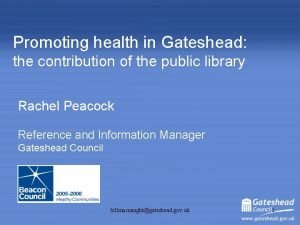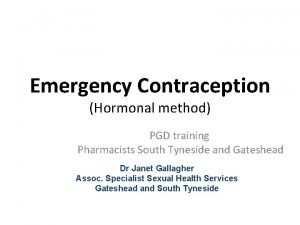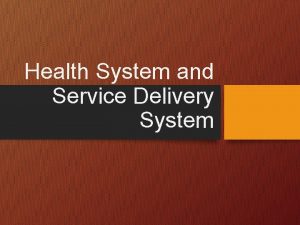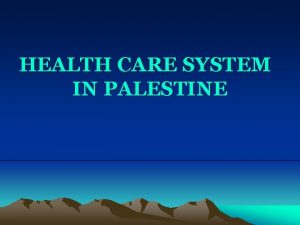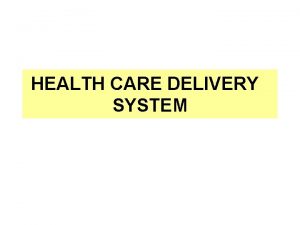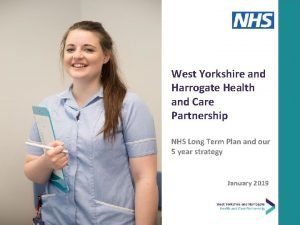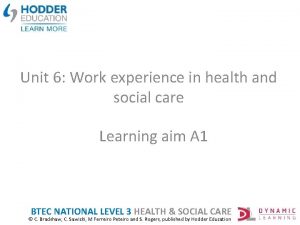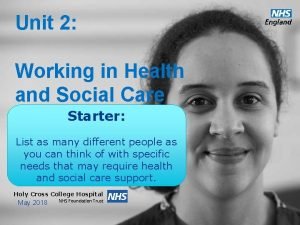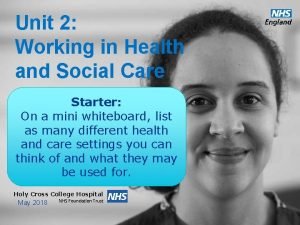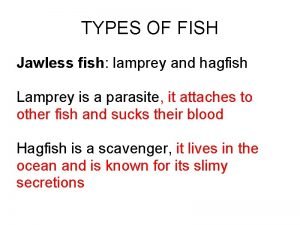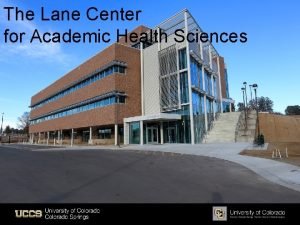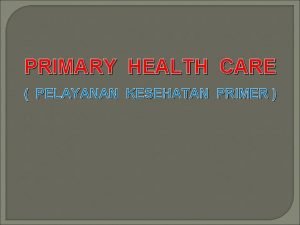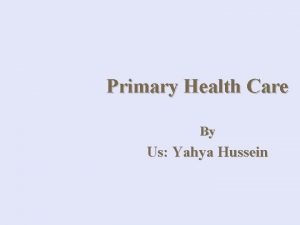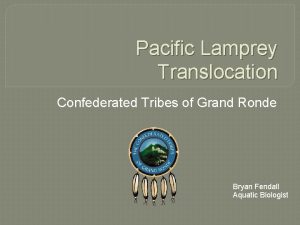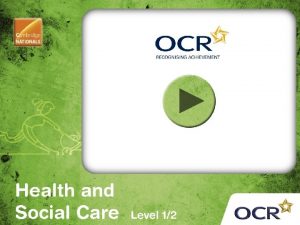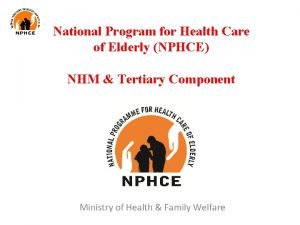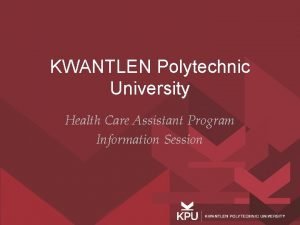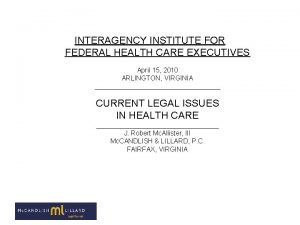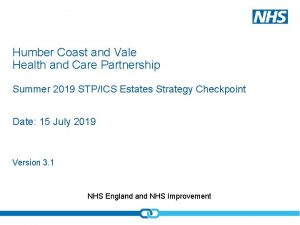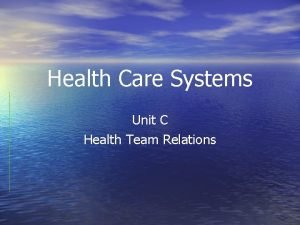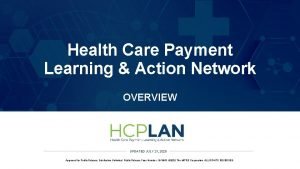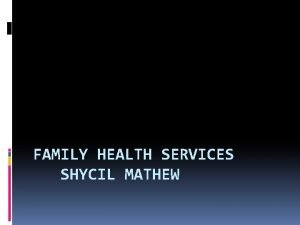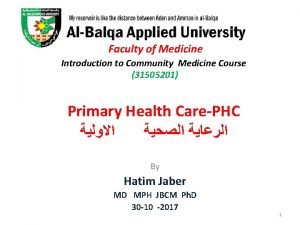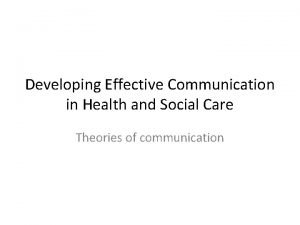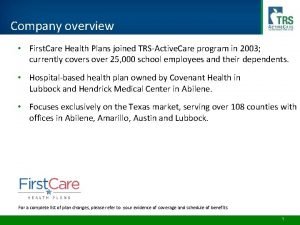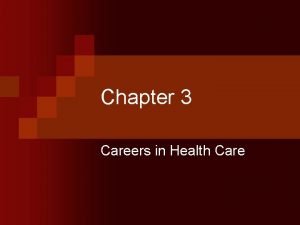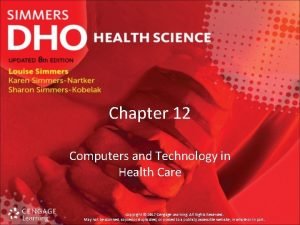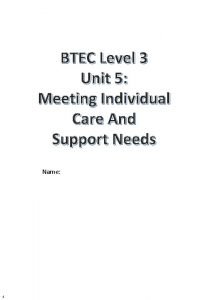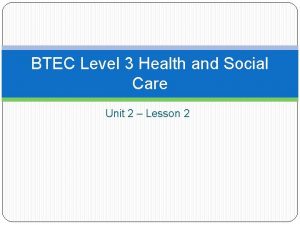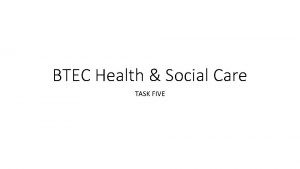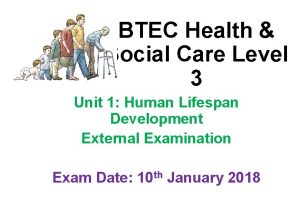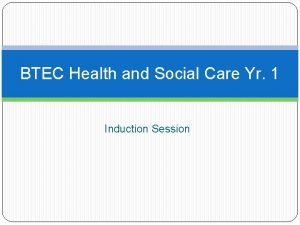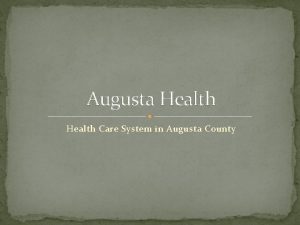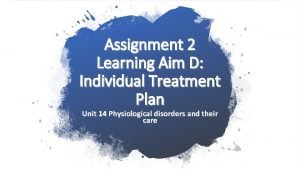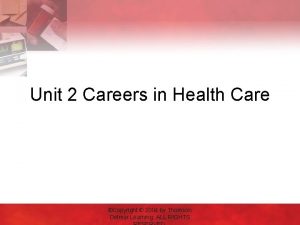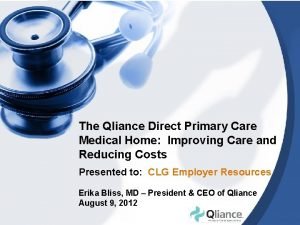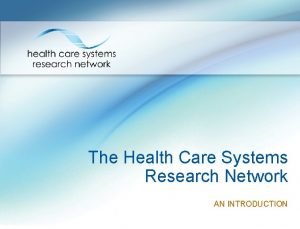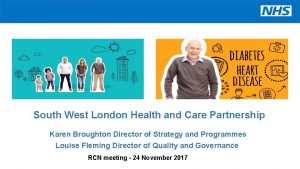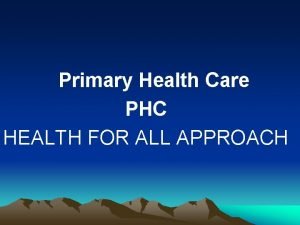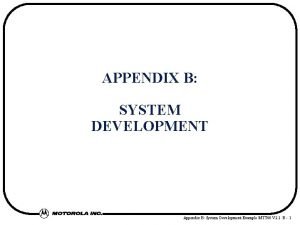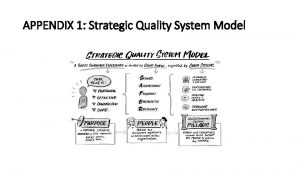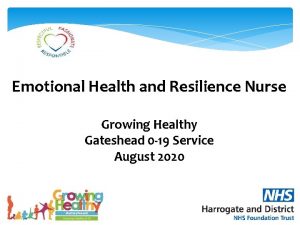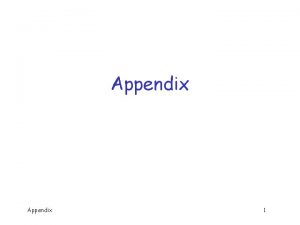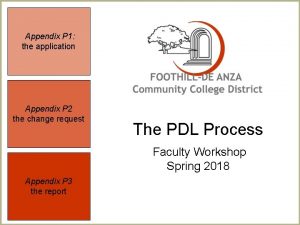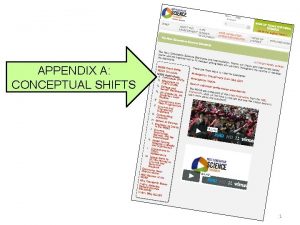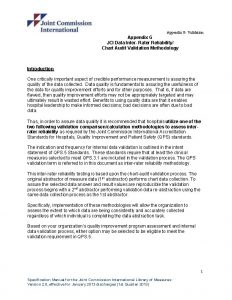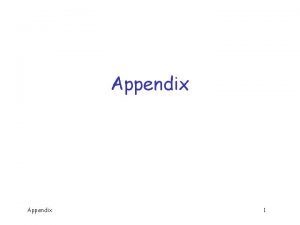Appendix 2 Gateshead Health Care System Making Gateshead





















































































- Slides: 85

Appendix 2 Gateshead Health & Care System Making Gateshead Thrive – the Plan 1

Making Gateshead Thrive – the plan 1. What is the Gateshead Plan ? 2. The challenges we face 3. Who’s involved in shaping Gateshead? 4. Strategic Direction 5. What are we going to do? 6. Key principles underpinning the plan 7. Programmes and Transformation areas The Gateshead Plan: Top 3 Priorities 1. Frailty 2. Residents with multiple, complex needs 3. Children and young people’s wellbeing and mental health 8. Enabling strategies 9. Financial strategy 2

1. What is the Gateshead Plan? 3

What is the Gateshead Plan? The Gateshead Plan is not a strategy, it sets out the narrative about why we have come together as organisations and our approach going forward. It is being developed as a single process, with the plan forming the basis of the 2019/20 organisation plan for those NHS organisations in the system and will include: • a direction of travel for the medium and longer term, whilst also having a focus on what can be done now in the short term i. e. from 2019/20 onwards (see below); • how we see our relationships with each other, with local people and with broader collaborative areas; • the financial position across the system – financial pressures and our approach to savings/efficiencies proposals from a whole system perspective for 2019/20; • details of system demand, encompassing health and social care demand growth; • plans for key priority areas for 2019/20 (see below); • plans for transformation programmes of work (see below); • will link to the expected priority areas of the NHS Plan and Government’s Green Paper on adult social - Cancer; Cardiovascular & Respiratory; Mental health; and Learning Disability and Autism 4

What is the Gateshead Plan? We are committed to: A system plan based on place that supports the thrive agenda We are changing health and care in Gateshead. We are determined to plan and deliver health and care differently for the people of Gateshead. • Working together based on trust, • Concentrating on Gateshead • Breaking down the barriers between health and care • Planning health and care together • Delivering health and care together • Using our money and people wisely and well 5

Strategic Outcomes Framework The development of Gateshead integrated strategic planning is • complex, • challenging • and multi-faceted However, it provides a unique opportunity to shape, guide and bring together our health and care system in pursuit of a joint vision and a common set of key outcomes that are owned collectively by local health and care partners and local people. . There is an opportunity to strategically plan and commission for better outcomes based upon the Joint Strategic Needs Assessment using the mature relationships and trust that are evident to plan together and deliver together as a whole system. Working closely with Public Health colleagues and using population segmentation will provide us with a measure of what thrive looks like but will also inform the provision of resources where we may choose to target them according to the social gradient. The strategic outcomes based approach will enable providers to innovate and work across the health and care system (including housing support) over the long term, whilst facilitating a move away from transactional commissioning with a focus instead on transformation based upon population need. Cross cutting strategic outcomes have been developed that will require providers to work together with commissioners, for example in moving towards more community provision and in delivering the prevention agenda. There are 13 strategic outcomes that have been developed by the GHCP described in the framework for better outcomes. 6

7

2. The challenges we face in Gateshead 8

The evidence 2016 -2018 9

So, you are born in Gateshead, that means………. 10

11

So, you are born in Gateshead that means……… you feel the burden caused by austerity and welfare reforms which have been greater in the North than the South of England - exacerbating further the difference in health you could be one of more than 23, 600 people who live in a neighbourhood with deep levels of deprivation. you are more likely to experience poor health outcomes compared to people living in the South of England you live in the 73 rd most deprived area out of the 326 local authorities in England you are more likely to die sooner and experience more illness or disability than people living in the South of England 12

13

14

Where you are born in Gateshead also makes a difference…. • A man living in the Bridges area on average lives 9. 3 years less than a man in Whickham South and Sunniside. • A woman living in Felling lives on average 7. 7 years less than a woman in Whickam South and Sunniside. 15

16

The social determinants of health’ are all interconnected - how old you are, whether you’re male or female, what kind of house you live in, how well you did at school, if you have a job and what kind of a job it is, how active you are and the quality of the environment around you. 17

Healthy Life Expectancy In Gateshead Healthy life expectancy at birth (Female) 2015 -17 74 72 70 68 66 64 62 60 58 56 54 52 50 64. 0 71. 6 59. 1 60. 4 Gateshead North East 63. 8 53. 5 Nottingham Gateshead 5 year Target England Wokingham 18

DPH Strategic recommendations 2017 The Health and Wellbeing Strategy should be renewed, adopting a much longer term approach, with a strengthened vision to address inequalities. This needs to include measures to address the social determinants of health alongside prevention and early intervention at every level. Partners in Gateshead should shift the focus from managing the burden of ill health to promoting actions that create the right conditions for good health through the employment of a robust Health in all Policies approach. The Council and its partners should target resources to those individuals and communities most in need. Robust evaluation of reach and impact should be undertaken regularly using a Health Equity Audit approach. 19

Inequalities, Right. Care and Population Health Inequalities in health outcomes in the North East are related to the ‘wider determinants’ of health rather than on healthcare experience. Many of these wider determinants are factors and are an integral part of the place (work, housing, environment etc) and are largely the responsibility of local government, all partners working closely together to identify opportunities to support the reduction in health inequalities. By using Right. Care alongside the local intelligence such as the JSNA we are able to ensure our plans focus on the opportunities which have the potential to provide the biggest improvements in health outcomes and reductions in health inequalities. 20

21

3. Who’s Involved in Shaping Gateshead? 22

Gateshead Federation of GP Practices (GFGP) We have come together as the Gateshead Health and Care System 23

4. The Strategic Direction 24

Why did Gateshead health and care organisations come together? • Gateshead boasts some of the best health and care services, but stubborn health inequalities persist (both within Gateshead and relative to the rest of the country) • We have layered resource on top of existing resource to respond to need in a silo way - expensive and inefficient! • People have told us their experience of care is fragmented • Where our system has needed to be strongest (e. g. for people with multiple and complex needs), it has often been the weakest • Add workforce challenges and financial sustainability into mix…. . we understood that we needed to work differently to deliver better outcomes for local people with less resource

Our journey so far June workshop 2018 September 2017 and April 2018 - report to Health and Wellbeing Board setting out the thinking of the health and care system leaders about the opportunities for integrating health and care services with the explicit aim of improving the health and wellbeing outcomes of Gateshead residents. A week-long workshop to develop emerging ideas further. The outcomes from the workshop were presented to Board members at a report-out session before its July meeting and a commitment was made to bring a progress update back to the HWB board in the Autumn. A key outcome from the June workshop was the commitment to pursue a ‘primacy of place’ approach in taking forward health and care integration in Gateshead. Primacy of Place describes a community's strategic decision to dedicate resources to improving life experiences for residents, businesses and visitors 26

Our journey so far Our place-based approach has implications for our relationship with wider footprints/ ‘collaborative areas’ at Integrated Care System (ICS) level and Integrated Care Partnership (ICP) North level that include Gateshead. As a local system, we have made it clear that we see the role of the ICS/ICP as being to support our journey and local working arrangements across health and social care. 27

Place based approach as far as possible, integrated planning (commissioning and provision) of services takes place at a Gateshead Place level with services being provided as close to peoples’ homes as possible Gateshead System designed, locally delivered, health and care the importance of local people, local politicians and local professionals being directly involved in decisions about the future of health and social care in Gateshead. A clear, shared and consistent narrative describing what we are seeking to achieve for the benefit of local people Our local ‘ask’ from the ICP/ICS is clear Opportunities to address the key enablers to integration at a broader footprint such as workforce, IT etc. decisions are made as close to ‘place’ as possible, strengthening local democratic accountability in developing and implementing new models of care leaders of place with a population focus, local government have a key role in shaping an environment that creates the conditions which facilitate good health across the life-course - housing, economy, employment etc. 28

Helping people to Thrive in Gateshead The focus for the system is to shift care upstream to prevent the levels of ill health our population experiences, to provide integrated and proactive care and support whereby ill health is managed earlier and more effectively. These approaches have been shown to reduce the need for high cost acute care and long term care packages thus managing cost and improving health and wellbeing. 29

Making Gateshead a place where everyone thrives Intelligence we hold about our population tells us that at present, the majority of the Gateshead population are either vulnerable, or only just coping, with less than 40% of the population managing or thriving. The Thrive strategy aims to turn this around, so that only a small minority are vulnerable or just coping, with most people doing well. 32, 500 (18%) 42, 000 (21%) 62, 000 (31%) 60, 000 (30%) 30

Our Thrive agenda for Gateshead has five pledges 1 2 • Put people and families at the heart of what we do; • Tackle inequality so people have a fair chance; 3 • Support our communities to support themselves and each other; 4 • Invest in our economy to provide sustainable opportunities for employment, innovation and growth across the Borough; 5 • Work together and fight for a better future for Gateshead. 31

5. What Are We Going To Do? 32

Aims and Objectives of the GH&C System The Gateshead Health and Care Plan recognises that population health cannot be achieved through provision of services alone. This can only be achieved through linking strategy with the wider determinants of health such as housing, education, and employment as well as being able to empower people and communities to be more active partners in their health. Therefore our aims and objectives are to : • shift the balance of services from acute hospital care and crisis interventions to community support with a focus on prevention, early help and self-help. As part of this, ensure that a shift in activity is accompanied by a shift in resource as appropriate i. e. that money follows the patient/service user; • support the development of integrated care and treatment for people • create a joint planning and financial framework for managing the difficult decisions required to ensure effective, efficient and economically secure services during a period of continued public sector financial austerity, getting the most from the Gateshead £. 33

There will be a shared system in Gateshead that is collectively responsible for: A system designed to address our issues; A People Strategy that encompasses all of our workforce, including carers, volunteers and service users themselves; An IT Strategy that links with work at broader footprints Developing a single narrative for Gateshead and speaking with one voice. Services designed and delivered by locality based teams (primary care, community, social care), place based teams (secondary care), ICP teams (some secondary & most tertiary care) putting Gateshead people and the thrive agenda at the heart of our strategic planning; Designing the system and leading areas of work; Planning, delivery, assurance and accountability; Making best use of estates Developing the Strategic Outcomes Wheel for the local system, securing the best value from the Gateshead £, consistent with our place based approach; 34

Proposed approach: Primacy of Place • We will have no purchaser provider split in Gateshead – partners are bound together in interests of the Gateshead population; • We will have outcomes focused strategic planning; • We will be prepared to make some radical changes; 35

What does it mean for our organisations and ways of working? • Gateshead speaks with a single voice – in Gateshead, across the NE and to our regulators • System ownership – we are one Gateshead • Joint problem solving • No blame • Aligning organisation aims and objectives to the system vision and priorities • Reviewing planning / budget cycles and processes to align with system needs • Adopt and apply the financial principles 36

6. Key principles underpinning the plan 37

Governance and System leadership 38

Governance our Memorandum of Understanding (MOU) An MOU has been agreed by all organisations in the system. The M. O. U sets out the arrangements within which the Gateshead Health & Care System will work together for the benefit of people and communities within Gateshead so that their health and care needs can best be met within available resources to the local system. Key components include: • An extended system membership, reflecting a whole system approach; • An Mo. U based on trust – not a non-legally binding document; • A statement of commitment from system members – to play a significant, active and ongoing contribution to enhancing the health, care and wellbeing of local people in a way that is locally sustainable; • It does not replace the legal frameworks or responsibilities of our organisations; • Nothing in the Mo. U will prevent organisations from meeting their statutory responsibilities; • Decision making would be based upon a consensus approach, with a voting arrangement in place as a backstop measure only. 39

40

Governance – roles and responsibilities • Accountable Officers (AO) - To ensure senior leaders have excellent relationships with those leading the system, 6 weekly dedicated Gateshead informal updates will be added on to the AOs Newcastle Gateshead meetings. The AOs are now collectively the arbiter of disputes. AOs would be appraised of progress via their representative and at the Gateshead Health and Wellbeing Board. • Senior Responsible Officers (SRO)- The system has chosen to support 10 transformation areas and prioritise 3 areas. Each area has an SRO nominated from the System there to help be a link to each of the transformation work programmes recognising that there are many established existing structures that need to be coordinated and supported by the system • Membership of the Weekly meeting. Those attending the meeting on a weekly basis do so in one of two roles: • Role 1: designated officers acting on behalf of their organisation with full delegated responsibility within the remit of their organisational boundaries. These members carry the voting rights of their organisations. These officers need formalising so there is clarity who the designated officer is for each organisation • Role 2: organisational representatives or subject experts attending the meeting to offer advice and guidance to the system. At present there is no limit on these numbers. 41

How will we recognise success? We have a greater focus on reviewing quality, performance, finance and planning at a local system level i. e. moving the lens from a focus on individual organisations to a focus on the system as a whole. A new Gateshead system report is in development which includes reporting progress on the transformation priority areas. 42

Interface with the Integrated Care System (ICS) and Integrated Care Partnership (ICP) 43

Integrated Care System Integrated Care Partnerships The long term ambition for the people of the North East and North Cumbria (NENC) is to transform health outcomes and help them to live longer, healthier and wealthier lives. The region is divided into four sub geographies called integrated care partnerships (ICPs), where collaboration takes place between place-based commissioners and place-based providers. Newcastle Gateshead CCG sits alongside Northumberland North Tyneside CCG as part of the ‘North’ ICP. An aggregated NENC System Operating Plan has been developed to provide a supportive narrative to articulate how NENC ICS will deliver the requirements of the NHS Operational Planning and Contracting Guidance. It has been built up from Place level discussion, where there is active engagement with local government and community and voluntary sector partners, through to ICP level plans and active collaboration with NENC wide priority programmes including Health Education England. These 2019/20 planning submissions align with, and support delivery of, NENC’s longer term priorities. The North ICP is building on a long history of partnership working across health and social care, and through this collaboration the results have been positive and greater than any individual organisation could have achieved alone As a footprint the North ICP is growing and developing, and is starting to understand what working together as a system might offer in facing the challenges ahead, and delivering much more for the people who we serve. 44

The four Integrated Care Partnerships in the ICS and the interface with the Gateshead Health and care System ICS/ICP Gateshead Health and Care System Relationships Population planning working upwards not top down Delivering in neighbourhoods Making decisions at place Enablement in the wider geography 45

Gateshead ‘Primacy of Place’ based approach to health and care integration 46

7. Programmes and transformation areas 47

Delivering the Gateshead plan We know WHY we need to change We know WHAT needs to change We know WHO the people are who can deliver the change Gateshead boasts some of the best health and care services, but stubborn health inequalities persist We need to work differently to deliver better outcomes for local people with less resource Gateshead Health & Care System will work together for the benefit of people and communities within Gateshead so that their health and care needs can best be met within available resources to the local system. 48

So how will we deliver the Gateshead plan? Through our primacy of place approach we said • we will deliver services that are designed and delivered by locality based teams (primary care, community, social care), place based teams (secondary care), ICP teams (some secondary & most tertiary care) putting Gateshead people and the thrive agenda at the heart of our strategic planning. During the Gateshead System workshop week, it was agreed to oversee a number of transformation programmes. The rationale for doing this was: • To share our transformation capacity, especially people; • To align our current and future transformation activity to our joint planning arrangements; • our partners are bound together in interests of the Gateshead population • To avoid duplication and unintended consequences • we will have outcomes focused strategic planning; • To reduce meetings covering the same activities • we are prepared to make some radical changes; • To provide direction in working to deliver the outcomes framework • To resolve any barriers/issues to taking work forward We are already seeing the results of, and gaining recognition for this approach with the Gateshead Care Partnership winning the 2018 HSJ Award for improved partnership working between health and local authority. • To reduce the ‘burden’ of ‘over consultation’ on patients and carers • To mitigate our financial challenges, manage demand enhance service quality and safety. However, we need to ensure alignment of our plan, vision and work plans. 49

Transformation Areas We were clear that: Therefore: • • We wanted to act together to mitigate our financial challenges; We would concentrate on high value, system wide transformation activity; It is important to link transformation activity, finance and service planning. To ensure our work programme is manageable and our oversight effective, we have made the distinction between: • • Transformation programmes which aim to change services across the system and have implications for more than one partner; Bi-lateral discussions between partners; Service developments which are predominantly about improving the internal operations of one partner; Operational and transactional matters which highlight individual cases or minor changes Each work stream has identified their strategic vison for co coordinating integrated services across the Gateshead system, articulating how can it be delivered at place in 2019/20 and aligned to the framework for better outcomes. The leads for the transformation areas have considered: • • • What can be done differently to join up our approach across the system for the benefit of local patients/ service users? Is there anything that can be done to differently to reduce cost within the system in the short and longer term? Is Gateshead an outlier currently and, if so, what can/is being done to address this? A Plan on a Page has been developed for each priority area 50

Transformation Areas The following transformation programmes have been identified and have now been included as part of the Group’s work programme, with the top three priority areas highlighted below: 1. Frailty 2. Children and Young Peoples’ wellbeing and mental health 3. Residents with multiple and complex needs 4. Deciding Together, Delivering Together 5. End of Life Care 6. Intermediate Care 7. Community Transformation 8. Community Model for Learning Disabilities 9. Falls 51

Programmes of Workstream System Sponsor Project Manager 1 Frailty Steve Kirk (GP Fed) TBC 2 Residents with multiple and complex needs Children and Young People’s Wellbeing and Mental Health Susan Watson (QE) Funding identified 3 4 Caroline O’ Neil / Lynn Catherine Richardson WIlson (LA) Deciding Together, Delivering Together James Duncan (NTW)/Chris Piercy (CCG) End of Life Care Jane Mulholland, up to June 2019 (CCG) Intermediate Care Steph Downey (LA) Julia Young (CCG) Caroline Wills 7 Community Transformation Michael Laing (GHNT) Gill Wigham (GHNT) 8 Learning disability Steph Downey (LA) TBC 9 Falls Alice Wiseman (LA) Natalie Goodman 5 6 CCG colleague identified Sam Corras 52

1. Frailty 53

Frailty What is the strategic vision? Frailty ICARE is the regional approach to Frailty led by the “Care Closer to Home” programme of the North East, North Cumbria ICS The Regional ICARE toolkit was launched at a Regional workshop on 4 th September with the expectation that each area subsequently initiates and sets up an integrated, system wide approach to design and implement a programme of work to meet the outcomes set out in the Regional Frailty toolkit www. frailtyicare. org. uk The aim of the Frailty ICARE Toolkit is to “drive the development of better ways of preventing frailty and supporting those living with frailty” To initiate and plan the programme of work to deliver the outcomes of the Frailty ICARE toolkit, a Gateshead System wide Frailty group is established and will incorporate existing Frailty groups and improvement work already underway, the Gateshead system wide Frailty group will be called the Gateshead Integrated Frailty Group. What can be done in 2019/20 to help deliver / move things forward? The Gateshead Integrated Frailty Group includes representation of all relevant organisations across the Gateshead System with nominated representation signed off by the Gateshead Health and Care System Group. A mapping exercise based upon the outcomes identified within the Frailty ICARE toolkit has been undertaken with all organisations to identify the baseline position. A workshop was held in February 2019 for all members of the GIFT to share, discuss, and develop the subsequent action plans which will develop from the mapping exercise to meet the Frailty ICARE toolkit outcomes These actions plans will identify any required resources, support etc required from the Gateshead Health and Care System Group The group will report progress to the Gateshead Health and Care System Group on a bimonthly basis 54

Frailty How will this align with / help deliver the 13 strategic outcomes? The Regional Frailty ICARE toolkit outcomes are consistent with the outcomes identified within the Gateshead System outcomes Framework and was approved and signed off as such at the Gateshead Health and Care System Group. What support is needed to achieve this in 2019/20? The Gateshead Health and Care System Group will be required to provide support, direction and approval of implementation plans and any associated resources to the Gateshead Integrated Frailty Group (GIFG) and provide resolution of any difficulties/blocks across the system which would prevent GIFG meeting the outcomes of the Frailty ICARE toolkit 55

2. Residents with multiple, complex needs and frequent attenders 56

Residents with multiple, complex needs and frequent attenders • What is the strategic vision? The Gateshead Homelessness and Multiple and Complex Needs HNA has assessed the scale, nature and impact of homelessness combined with complex and multiple needs in Gateshead in order to provide information which can be used to address the wider determinants of health and influence strategies and actions to prevent and alleviate homelessness and reduce health inequalities for this group. The HNA has demonstrated the considerable overlap between homelessness and a wide range of other health and support needs - homelessness is not just a housing issue. Homelessness is not inevitable but the HNA shows we are still not solving it, we still have occurrences in the Borough: 3, 322 presentations to Housing Options, 211 homeless in • What can be done in 2019/20 to help deliver / move things forward? • A Public Sector Reform (PSRis being established to consider the needs of those with multiple and complex needs. • In addition to this the Foundation trust has been leading some work on frequent flyers with the aim of connecting the two aspects to understand, for example are these the same group of people • Coordinate homelessness prevention and support to include preventing all domains of homelessness (statutory homeless, single homeless, rough sleepers, hidden homeless, multiple exclusion homeless, severe and multiple disadvantage) across Gateshead Council and partners. priority need, 110 homeless not in priority need, 457 referrals to Supported Housing, Fulfilling Lives: 14 rough sleepers, 50 Hidden Homeless, Basis@363: 163 rough sleepers, 578 hidden homeless, Hard Edges Report: 3, 325 in multiple and severe disadvantage • Join up across the system to commission and deliver coordinated, preventative services which are designed to understand respond to the whole person and are able to work effectively with multiplicity of need. 57

Residents with multiple, complex needs and frequent attenders How will this align with / help deliver the 13 strategic outcomes? What support is needed to achieve this in 2019/20? 58

3. Children and young people’s mental health and wellbeing 59

Children and young people’s mental health and wellbeing What can be done in 2019/20 to help deliver / move things forward? What is the strategic vision? Following extensive listening and engagement with Children Young people and their families the CCG working with a range of statutory and 3 rd sector providers is developing a programme of Transformation. We have heard Children and young people want easier access to community based services with shorter waiting times, with a particular emphasis on multimedia access and using technology, moving away from health focus to a community focus. The children and young people’s mental health service is mainly commissioned by Newcastle Gateshead CCG. Currently investment is £ 7. 4 m which includes a contribution of £ 180 k by Gateshead council. The costs are broken down as follows: • Northumberland, Tyne and Wear Mental Health Trust (NTW) £ 6. 5 m with a non-recurrent amount of funding also agreed £ 448, 000. • South Tyneside Foundation Trust (STFT) who deliver early help low level services have a contract circa £ 400, 000. We know the waiting times have been too long and in the past there have also been examples of Children and Young People experiencing difficulty in getting the help that they need. The above costs exclude Voluntary and community services (VCS). There are four main VCS including Streetwise, North East Counselling Service, Children North East and Kalmer Counselling with a combined contract value of £ 300 k. In regard to improving outcomes for children and families, No Health without Mental Health published in 2011, emphasises the crucial importance of early intervention in emerging emotional and mental health problems for children and young people. Effective commissioning will need to take a whole pathway approach, including prevention, health promotion and early intervention. The CCG also have a separate contract with Barnardo’s to deliver services for bereavement and sexual abuse. In addition to this work as a system we need to work together to deliver tier 1 work through the 0 -19 contract as well as into schools and through mental health support teams via the mental health trailblazer pilot. The service that will deliver tier 2 and 3 services will be commissioned via 2 new specifications. Getting Help (tier 2) which also includes the single point of access and Getting More Help (tier 3). We will need to implement the new specifications with a lead provider. Negotiation between the CCG and NTW are underway with an expectation that these will be adopted in April 2019. The successful trailblazer bid (embargoed until next week) will also see training of support team staff November and December 2018 to go live early 2019. 60

Children and young people’s mental health and wellbeing How will this align with / help deliver the 13 strategic outcomes? • Reduction in health inequalities and healthy life years • Increased focus across the system on prevention and early help • Health and care offer built around people, families and communities • Every child has the best start in life • A reduction in unplanned care • Integrated care • Safe and effective care • Excellent care with dignity and respect • Sustainable health and care system • Workforce with the skills, knowledge and authority to work seamlessly • NHS and social care standards met What support is needed to achieve this in 2019/20? Overview of the implementation of the Getting Help and Getting More Help specifications and timely delivery of the trailblazer work. 61

62

63

64

Link to the NHS long Term Plan priority areas Cancer; Cardiovascular & Respiratory; Mental health, Learning Disabilities & Autism The Gateshead Heath and Care System is well placed to ensure place based plans are developed which will form the foundation on which to build the collective ICP plan. Through our primacy of place approach we will deliver services that are designed and delivered by locality based teams (primary care, community, social care), place based teams (secondary care), ICP teams (some secondary & most tertiary care) putting Gateshead people and the thrive agenda at the heart of our strategic planning. 65

8. Enabling Strategies 66

Information Technology (IT) Digital Transformation is one of the ICS priority work streams. There is already a significant piece of work taking place at a regional level through the development of the Great North Care Record - a new way of sharing medical information across the North East and North Cumbria by health and social care practitioners. It means that it will be possible to share key information about peoples’ health such as diagnoses, medications, details of hospitals admissions and treatments between different healthcare services including hospitals, out of hours and ambulance services. The programme is a collaborative piece of work including local NHS, social care, academia, local charities and third sector providers. There is also scope for local integrated data sets using population segmentation to support predictive care planning at different levels e. g. borough level, practice level and individual patient level, linked to clinical and financial data. This can help to target patients and service users through a system wide approach. As we develop our IT systems locally, we will need to make the most of these emerging opportunities. We need to support opportunities to use data and technology to improve health and care services for our patients and public. This may be through using technology to access services through 111 or online patient consultations and opportunities to use technologies to support people to manage their own condition. The Long Term Plan for the NHS sets out the longer term ambition of the NHS. Delivery Plan 19/20 • Develop appropriate IT provision to support the implementation of Urgent Treatment Centres, including records sharing and direct booking from 111. • Work as a system to share learning and opportunities which the Global Digital Exemplar programme offers. Continue with joint working across the region through the Digital Care Programme. • Continue to develop the Great North Care Record (part of the Local Health Care Record Exemplar programme). • Develop digital tools to support patients in their self-management and opening more digital channels to access services and advice. 67 • Support implementation of NHS App when it becomes available

Workforce Transformation is one of the ICS priority work streams, and is a key enabler to delivery across all areas of work. It is widely recognised that there is a pressing need to address health and care workforce challenges and that this needs to be a system wide solution between social care and health, given the interface between both the clients/patients who use services and the people who work in delivering social and health care in the public sector, the voluntary sector and the independent care sector. Recruitment and retention of a comprehensive social care work force, paid a fair wage for the work they do has to be a high priority. There is an urgent need to address the negativity and “stigma” associated with a job within the care sector. There also particular challenges relating to attracting and retaining NHS staff within the north east which is impacting upon GP primary care, nursing and secondary care. More broadly, there is a need to address the likely impact of Brexit, given the number of people from outside the UK who work in this field. As many of the challenges we are facing are similar to those experienced across the north east, there are opportunities to address some of these issues across a broader footprint (regional level). At a Gateshead place level, the need to develop an integrated People Strategy has been identified which will look to ensure that the approach being taken in Gateshead builds upon and adds value to the work taking place at a NE level. 68

Workforce Immediate workforce priorities have been identified across the health and social care system including: • • • • Increase domiciliary workforce supply through proactive marketing of health and social careers within schools programmes Facilitate agile working across organisations and sectors to sustain the system ‘right skills, right place’ through streamlining of policies and clinical passporting Move to competency based roles which remove boundaries but value unique professional contribution International Recruitment including general practitioners, hospital nurses and other shortage occupation groups Enhancement of retention strategies including cross sector fellowships and flexible working options Portfolio career opportunities across health sectors, research, leadership and academia Increasing multidisciplinary pre and post registration placement opportunities for learners in primary care Nursing Associate Programmes in acute, care home, general practice and third sector organisations, supporting development across sectors Development of apprenticeship pathways that encourage ‘earn and learn’ from career entry to advanced level professional for the clinical and non-clinical workforce Development of career entry apprenticeship roles that work across health and social care Career start programmes for medical, nursing, care support and business administrator roles that support career entry and transition from acute to primary care settings Increasing capacity and diversity of primary and community teams to include enhanced patient facing roles Enhancing opportunities for workforce collaboration across Primary Care Networks and at Place including role development with third and voluntary sector organisations. 69

Communications and engagement It is essential that decisions on local health and care services are not only understood by local people but have their active involvement. This means: • Public engagement - telling our story and enabling people to shape our future direction; • Understanding peoples’ needs and how we can work together to address them; • Testing out with people and evolving proposals in the light of their input; • Gateshead people being able to relate to a single health and care system that seeks to meet their needs within available resources and in a way that is consistent with the Thrive agenda. There is also a need to communicate and engage with our staff in taking forward different strands of work. A key part of the transformation programmes outlined in this plan for instance, is the engagement and involvement of clinicians and staff. In terms of the NHS long term plan, the framework for the 5 year strategic plan has recently been published and we expect to have active engagement across the Gateshead system with staff, patients, the public in order to support organisations determine what the plan means for their area, and how best the ambitions it sets out can be met. Similarly the proposals in Green Paper focusing on ensuring that the care and support system is sustainable in the long term will also be reviewed. 70

9. Financial Strategy 71

Gateshead Resources: The Gateshead £ and how its used We spend around £ 450 m a year on health and social care each year supporting the population of Gateshead. 72

Our approach to managing the Gateshead £ • Developing approach to budget planning across organisations, built upon a set of principles that have been developed for financial planning and delivery. • Based upon a move towards a single system plan to support the sustainability of the Gateshead system as a whole as well as those of individual organisations. • A focus on real cost reduction and demand management across the system. • Avoiding cost shifting between organisations • Looking to focus on a small number of high impact areas with a view to taking cost out of the system. • Also looking to resource key system priority areas and to consider the scope to re-allocate funding across the health and care system where appropriate. • Plans of individual organisations to be looked at through a system lens. 73

Developing Our Financial Strategy We will develop a single system approach, based on the needs of our population. The demands on our resources are rising. If we do nothing • The gap between demand resources will approach £ 90 m for local authority services, driven by demand for social care by 2024 • We will need 50 extra acute beds by 2024 and 100 by 2029 • There will be 60, 000 more out-patient appointments a year by 2029 We can only tackle this through a single approach to managing demand by working with our local population, building on our collective assets. We will avoid cost shifting across organisations. Over time we will increase our focus on early intervention and prevention, increasing our investment across our community services to reduce pressures on hospital beds. We will collectively look at ways to reduce the complexity of the system, moving from an approach of managing efficiency (doing things right) to increasing the developing a health and care system that wraps around the needs of local communities (doing the right things) and finally to increasingly shift emphasis away from provision to empowering local people and communities to support their own health 74

System wide £, activity & demand planning During the 2019/20 planning process Directors of Finance across the North ICP health system have met to discuss planning requirements, using the opportunity to share and discuss at system level activity and finance, and identify risks and mitigations. In order to support the emerging system approach to The group has agreed that the Directors will work together to manage delivery of individual and ICP control totals. Underpinning principles for managing ICP finances are currently being agreed: • A single control total for the ICP; • Open book approach with transparency from all partners; • Collective oversight of the 0. 5% CCG contingency funds; • Recognition of the need to support existing services across primary care, secondary care, mental health, • • • . financially; Collective identification of residual risk and development of a strategy as to how best they could be managed on a system basis; No cost shifts; The pick-up of a service change either within the ICP or wider ICS is not one organisation’s challenge. There needs to be a ICP or wider ICS response as appropriate; Focus on real cost and activity reductions that are clinically led; Collective ICP approach to monitoring going forward; Collective approach to managing cash to avoid interest payments on cash borrowings. working within the Gateshead health economy, all stakeholders are undertaking a collective approach to modelling expected demand over the next ten years. Consequently potential demand is being modelled community and social care to establish a picture of likely future demand for services and to form the basis of a system plan going forward. This represents our baseline or “Do nothing” approach, we recognise this is not sustainable. We will measure success against this baseline, enabling us to properly assess the benefits of investment against this baseline scenario. We believe this can free up our system to make the brave decisions that are needed about how we use our resources. 75

Gateshead System Demand Planning Principles • Ten year modelling period • Focus on activity not cost • 2017/18 activity used as baseline • Modelling represents the “do nothing” scenario • Pragmatic approach but using ONS and IHAM growth estimates • Forecasts aggregated at a high level but can be drilled down • Modelling covers: Primary care, Acute care, Mental health, Community services, Social care • Disaggregation of priority areas: Frailty, complex patients, children's and younger people’s mental health services Outstanding issues • NEAS activity impact • Disaggregation of children and younger people's mental health services • STFT services delivered in Gateshead (IAPT) • Voluntary sector 76

Finance summary • Material growth in demand relating to older people • If activity is not managed effectively potential need for an additional 100 acute beds by 2028/29 • All sectors projecting growth along similar lines 77


So what’s next?

Our progress on prevention Clear priorities and joint plans in place or developing: • Smoking • Alcohol • Obesity • Mental health Health and Wellbeing strategy being updated focussed on 6 Marmot principles MECC approach being embedded

Life Expectancy 83 81 79 Age 77 Men 75 Women 73 71 7 -1 15 5 20 -1 13 3 20 -1 11 -1 1 20 09 -0 9 20 07 -0 7 20 05 5 20 -0 03 20 20 01 -0 3 69 Life Expectancy - Gap to England 2. 5 Years 2. 0 1. 5 1. 0 0. 5 20 01 -0 20 3 03 -0 20 5 05 -0 20 7 07 -0 20 9 09 -1 20 1 11 -1 20 3 13 -1 20 5 15 -1 7 0. 0 Men Women Trend (Men) Trend (Women)

Secondary prevention • Maintain focus on chronic disease management

Screening and immunisation Adult Screening programme uptake Screening Programme National Standard % Coverage (2018) England Gateshead Cervical Cancer ( 25 -64 years) 80% 71. 4% 73. 9% Breast Cancer (50 -70 years) 70% 74. 9% 77. 0% Bowel Cancer (60 -69 years) NA 59. 0% 61. 8% AAA (men 65 years) 75% 80. 8% 82. 6% Diabetic eye screening* 75% 82. 7% 81. 6%*

System-wide prevention Civic-level interventions Eg licensing Eg Beacon Lough Community-centred interventions Place-based approaches Eg integrated pathways Service-based interventions

The Gateshead Vision “Making Gateshead a place where everyone thrives” 85
 Level of care primary secondary tertiary
Level of care primary secondary tertiary Hint team
Hint team Cstd database
Cstd database Std clinic gateshead
Std clinic gateshead Hint team gateshead
Hint team gateshead Gateshead jsna
Gateshead jsna Eslington house gateshead
Eslington house gateshead Std clinic gateshead
Std clinic gateshead Care value base health and social care
Care value base health and social care Health and social component 3
Health and social component 3 Service delivery objective
Service delivery objective Secondary care definition
Secondary care definition Introduction of health care delivery system
Introduction of health care delivery system Health care system definition
Health care system definition What is inference
What is inference War making and state making as organized crime
War making and state making as organized crime Making health communication programs work
Making health communication programs work Setting health goals and making responsible decisions
Setting health goals and making responsible decisions Duty of care care certificate
Duty of care care certificate Cum se atrag magnetii
Cum se atrag magnetii Palliative care versus hospice care
Palliative care versus hospice care Se inmultesc prin oua
Se inmultesc prin oua Care sunt simturile prin care sunt evocate
Care sunt simturile prin care sunt evocate Care certificate 10 answers
Care certificate 10 answers Hip fracture clinical care standard
Hip fracture clinical care standard West yorkshire health and care partnership
West yorkshire health and care partnership Lamprey health care
Lamprey health care Unit 6 work experience in health and social care level 3
Unit 6 work experience in health and social care level 3 Unit 2 working in health and social care
Unit 2 working in health and social care Health and social care unit 2
Health and social care unit 2 Unit 14 physiological disorders examples
Unit 14 physiological disorders examples How do hagfish feed
How do hagfish feed Uccs lane center
Uccs lane center Lamprey health care
Lamprey health care Australian primary health care research institute
Australian primary health care research institute Primary care
Primary care Principles of primary health care
Principles of primary health care Site:slidetodoc.com
Site:slidetodoc.com Defination of phc
Defination of phc Provision of essential drugs
Provision of essential drugs Pearson btec level 3 national extended diploma
Pearson btec level 3 national extended diploma Bryan fendall
Bryan fendall Overview of education in health care
Overview of education in health care Ocr cambridge technicals
Ocr cambridge technicals Ocr health and social care level 3
Ocr health and social care level 3 Nphce
Nphce Trends in pediatric nursing
Trends in pediatric nursing Modern concept of child care wikipedia
Modern concept of child care wikipedia Empathy theory johannes volkelt
Empathy theory johannes volkelt Kpu health care assistant
Kpu health care assistant Ihi l 101
Ihi l 101 Interagency institute for federal health care executives
Interagency institute for federal health care executives Illinois health care services lien act
Illinois health care services lien act Humber coast and vale ics map
Humber coast and vale ics map Health team relations
Health team relations Health care payment learning and action network
Health care payment learning and action network Models of appraisal in health and social care
Models of appraisal in health and social care Ocr health and social care level 3
Ocr health and social care level 3 Gm health and social care partnership
Gm health and social care partnership Frimley health and care
Frimley health and care Objectives of family health services
Objectives of family health services Principles of primary care
Principles of primary care Communication cycle in health and social care
Communication cycle in health and social care Structural adjustment programs
Structural adjustment programs First care benefits
First care benefits Chapter 3 careers in health care review questions
Chapter 3 careers in health care review questions Multicompetent or multiskilled worker definition
Multicompetent or multiskilled worker definition Chapter 12 computers and technology in health care
Chapter 12 computers and technology in health care Health care agencies introduction
Health care agencies introduction Unit 5 health and social care assignment
Unit 5 health and social care assignment Health and social care unit 2
Health and social care unit 2 Intellectual meaning health and social
Intellectual meaning health and social Health and social care level 3 unit 1
Health and social care level 3 unit 1 Unit 5 health and social care assignment
Unit 5 health and social care assignment Unit 27 health and social care
Unit 27 health and social care Borrego health urgent care cathedral city
Borrego health urgent care cathedral city Augusta health care walk in clinic
Augusta health care walk in clinic Unit 14 assignment 2 health and social care
Unit 14 assignment 2 health and social care Pioneer health care
Pioneer health care Ucf kinesiology masters
Ucf kinesiology masters Universal health care meaning
Universal health care meaning Unit 2 careers in health care
Unit 2 careers in health care Direct primary care tacoma
Direct primary care tacoma Health care systems research network
Health care systems research network South west london health and care partnership
South west london health and care partnership Elements of primary health care
Elements of primary health care




